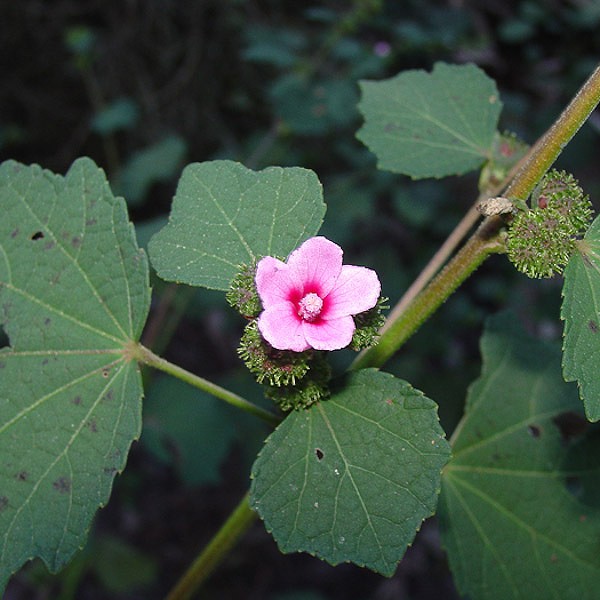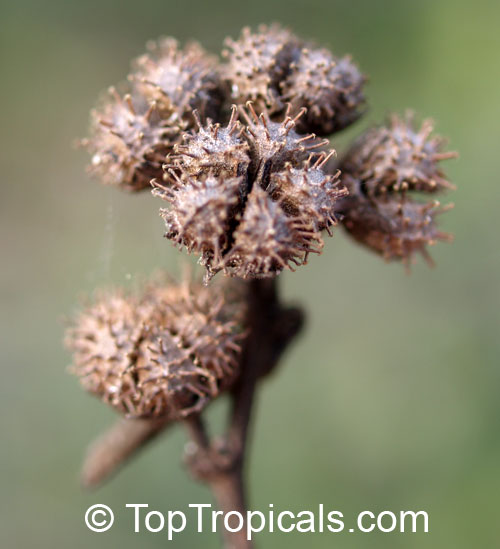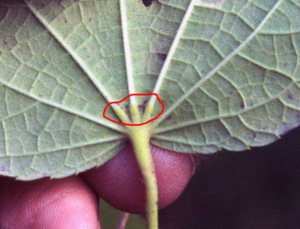Caesar Weed
Urena lobata
Malvaceae
A joyous week of going native. Tuesday evening it was fun to bore the West Palm Beach Chapter of the Florida Native Plant Society with my yada yada yada presentation, such an energized and cheerful group. Then this morning John and I joined ecologist Arnaud Roux for a sunny slog through Jonathan Dickinson State Park soggy shores to prepare an upcoming professional workshop on grassy plants. We enjoyed the Blue Curls, Roselings, Chaffheads, Liatris and so much more as pretty as a state park brochure.
So many lovely native wildflowers, so let’s talk about a Category I invasive exotic weed stuck in your socks. You don’t live in Florida long before meeting Caesarweed. Even if you never encountered its pink “Hibiscus” flower, its burrs have encountered you. The sock-stickers are segments of the fruit, which comes apart like slices of VELCRO pie. They arrive home in your pants cuff, liberate themselves in the Maytag, and transfer amusingly to your wife’s apparel.
Clinging may help explain the enormous range of this around-the-world weed of unclear origins, possibly in or around Tropical Asia. Florida has been home since at least the 1800s. Like many weeds, Caesarweed enjoys the company of humans as we create disturbed habitats, disperse its bristly hitchhikers in our spouse’s delicates, and enjoy its useful attributes.
As with so many widespread plants, the traditional medicinal uses are too many to list and actually a bit boring, although if you suffer “windy colic,” forget that medicinal marijuana, this is the weed for you.
Horticulturists are familiar with urease as an enzyme in soil microbes critical for transforming the natural decay product (or commercial fertilizer) urea into plant-useful ammonia/ammonium. You can buy “urease inhibitors” to ration the conversion.
Caesarweed has urease in its seeds, clearly giving them a kickstart at germination time. Urease-enhanced plant seeds are not rare, but even so, I dig the idea of a powerweed equipped with its own fertilizer-making enzyme. So often weeds have special means of establishment after their relocational skills plop them in strange new worlds.
Speaking of special adaptations, flip over a Caesarweed leaf. At the base on the main veins are glands, apparently to feed protective ants.
Beyond historical and modern medicinal interests, humans cultivate Caesarweed for fibers up to a yard long. Not a huge surprise really, as the Hibiscus Family is a fibery bunch: Cotton, Kenaf,“Indian Hemp,” and more. While some parts of the world are trying to figure out how to discourage Caesarweed’s growth, others research ways to boost germination rates and enhance growth as a commercial crop, especially in Africa where the plant acquires the name Congo Jute. Before synthetics, Florida used to be a fiber growing and testing center. It would be fun to know if Casaerweed had any participation in that.



